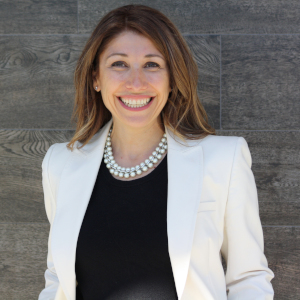Are you overestimating your property’s yield?
One simple miscalculation could put you in a lot of financial strife.

Blogger: Helen Collier-Kogtevs, managing director, Real Wealth Australia
Property investors are known for being an optimistic bunch, which is a great thing in the main. But it can get us into a little trouble if we’re not fastidious when we’re crunching the numbers.
I’ve seen it happen time and time again, when an investor excitedly comes to me with a property opportunity – usually a deal that seems ‘too good to be true’ – and asks for my opinion.
It often happens with student rentals. One of our clients asked us to review an opportunity for her on the Gold Coast, involving a student-let apartment that was on the market for $220,000, returning $495 per week.
Based on that purchase price, the yield is a whopping 11.7 per cent, right?
Technically, that may appear to be the case. But once you factor in the many costs of owning a student investment, including management fees, body corporate fees, insurance and council rates, the weekly income return after expenses dropped by $200.
When we recalculated the figures based on a net income of $295 per week, the yield drops to just 6.9 per cent. When you factor in the low capital growth rates associated with student rentals, this investment was quickly relegated to the ‘no go zone’.
In another instance, I knew of an investor who purchased an investment property and placed a 20 per cent deposit on the property. He calculated that the yield would be about 10 per cent, yet when I analysed the numbers with him, I came up with an entirely different figure.
Here are his figures:
Purchase price – $300,000
Deposit at 20 per cent – $60,000
Loan amount – $240,000
Weekly rental income – $480
With a loan of $240,000 receiving $480 per week rent, he calculated a rental yield of 10 per cent.
At face value, this is an excellent return but this investor failed to include a crucial figure in his basic calculations: the funds for the deposit.
In this instance, the deposit was borrowed funds from his line of credit against his own home. There is nothing wrong with borrowing your deposit against your own home equity, but he is paying interest on that money and yet he has not included it in his calculation of rental yield.
Let’s do the figures again, including the deposit:
Purchase price – $300,000
Deposit at 20 per cent – $60,000
Loan amount – $300,000 ($240,000 + $60,000 deposit)
Weekly rent – $480
Actual rental yield is: 8 per cent
To calculate the yield, we take the rent per week ($480), multiply by 50 weeks (allowing two weeks for vacancy; $24,000), divide by the purchase price ($300,000), and multiply by 100.
($480 x 50 weeks) ÷ ($300,000 x 100) = 8%.
The above example is a very simplistic calculation of the numbers, because what has not been included are all the other ownership costs, listed earlier. Once body corp, management fees and council rates are taken into consideration, the yield decreases further.
In my view, you need to consider all of your costs when calculating your yield. To simplify life, unless you’re really good at maths, I’d suggest you use property analysis software that does the hard work for you.
Either way, making sure you include all of the figures in your calculations is the only way to go when calculating yields. Otherwise, you’re working with inflated numbers that don’t represent the real picture – and that’s no way to create real wealth.
Read more:
Investors slapped with increased rates
How to build more capital and master the market: Part 2
Can I afford to invest in property?
Top 5 property investment FAQ's answered
6 things that can go wrong with property investment - and how to avoid them

